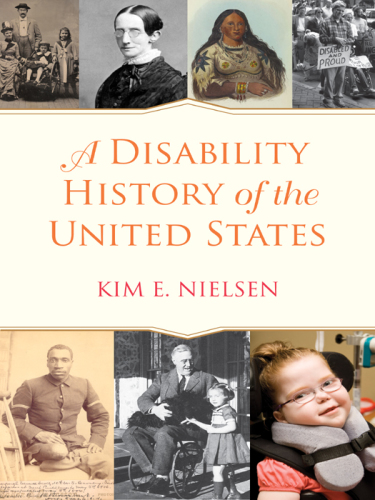
A Disability History of the United States
REVISIONING HISTORY
کتاب های مرتبط
- اطلاعات
- نقد و بررسی
- دیدگاه کاربران
نقد و بررسی

July 9, 2012
This impressive, instructive book by Nielsen, a professor of history and women’s studies at the University of Wisconsin–Green Bay (The Radical Lives of Helen Keller), seeks to define the pivotal role of people with disabilities in our nation’s past and their contribution to our laws, policy, economics, popular culture, and our collective identity. Disability, with its presumed need for dependency, challenges the American ideal of independence and autonomy. Nielsen uses various concepts of disability and dependency that go to “the heart of both human and American experience.” She accurately notes the difference of mind-body beliefs of the Native Americans from the Europeans who brought disease and death with them; the colonial definition of those considered insane or undesirable; and the many institutions housing the disabled. Nielsen does not sidestep the thorny issue of disabled war veterans, from the Revolutionary War through the Civil War to the present, with their surging costs and advances of laws protecting the rights of the disabled and guaranteeing accessibility in civilian life. Neilsen is at her best speaking not about the physically disabled and mentally ill, but of the legal and social barricades placed against women, minorities, and immigrants, who were classified “disabled” and blocked from full citizenship.

July 15, 2012
American history examined sensitively and skillfully from the bottom up, grounded in the often shabby and sometimes exemplary treatment of disabled individuals. Nielsen's (History and Women's Studies/Univ. of Wisconsin, Green Bay; The Radical Lives of Helen Keller, 2004, etc.) interest in the treatment of the disabled began with research into the political activism of Helen Keller, perhaps the most famous of severely disabled Americans. The author organizes the book chronologically, beginning with the handling of disabled women and men by Native Americans. The disability spectrum within indigenous North American cultures expanded in unwelcome ways as European settlers spread disease among the Indians. Nielsen then moves on to the stories of newly arrived immigrants from Europe and Africa who were not fully functional physically or mentally. "Disability" has always been an elastic term; Nielsen explains how the definitions solidified in the legal and social sense in the 19th and 20th centuries. The definitions would deprive many individuals of full citizenship rights as institutionalization became a trend. That institutionalization fell disproportionately on the enslaved (usually but not always because of skin color), women and those individuals sometimes inaccurately characterized as lunatics or idiots. In a slightly more upbeat chapter, Nielsen explains how those marked as disabled slowly banded together to fight for their civil rights. Slowly, individuals with potential, despite being branded, began to receive educational and vocational opportunities. The final chapter marks the year 1968 as the beginning of improved understanding and enlightened policies. Individuals previously kept out of sight and mind began to enter the mainstream culture. A lively historical record that fills a gap in the literature.
COPYRIGHT(2012) Kirkus Reviews, ALL RIGHTS RESERVED.

October 1, 2012
Individuals with physical, psychological, sensory, and cognitive disabilities occupy center stage in this unique perspective on American history. Nielsen, professor of history and mother of a disabled daughter, gives us a scholarly yet stirring narrative of our nation's uneasy relationspart pity and empathy, part discrimination and social stigmatizationwith disabled people. Prior to 1492, most indigenous North Americans had no word for disability. European settlement of the continent injected disability via the diseases the colonists brought as well as the conflicts, displacement, and environmental changes they wrought. Some large cities implemented ugly laws, prohibiting maimed or deformed people from appearing in public places. For a time, disabled individuals were subject to restrictive immigration policies, institutionalization, and even forced sterilization. WWII saw a surge in the employment of disabled people. The rise of activism and empowerment culminated in the passage of the Americans with Disabilities Act in 1990. There is still much to do if all disabled persons are to achieve pride and place and live a good life in the U.S.(Reprinted with permission of Booklist, copyright 2012, American Library Association.)

























دیدگاه کاربران